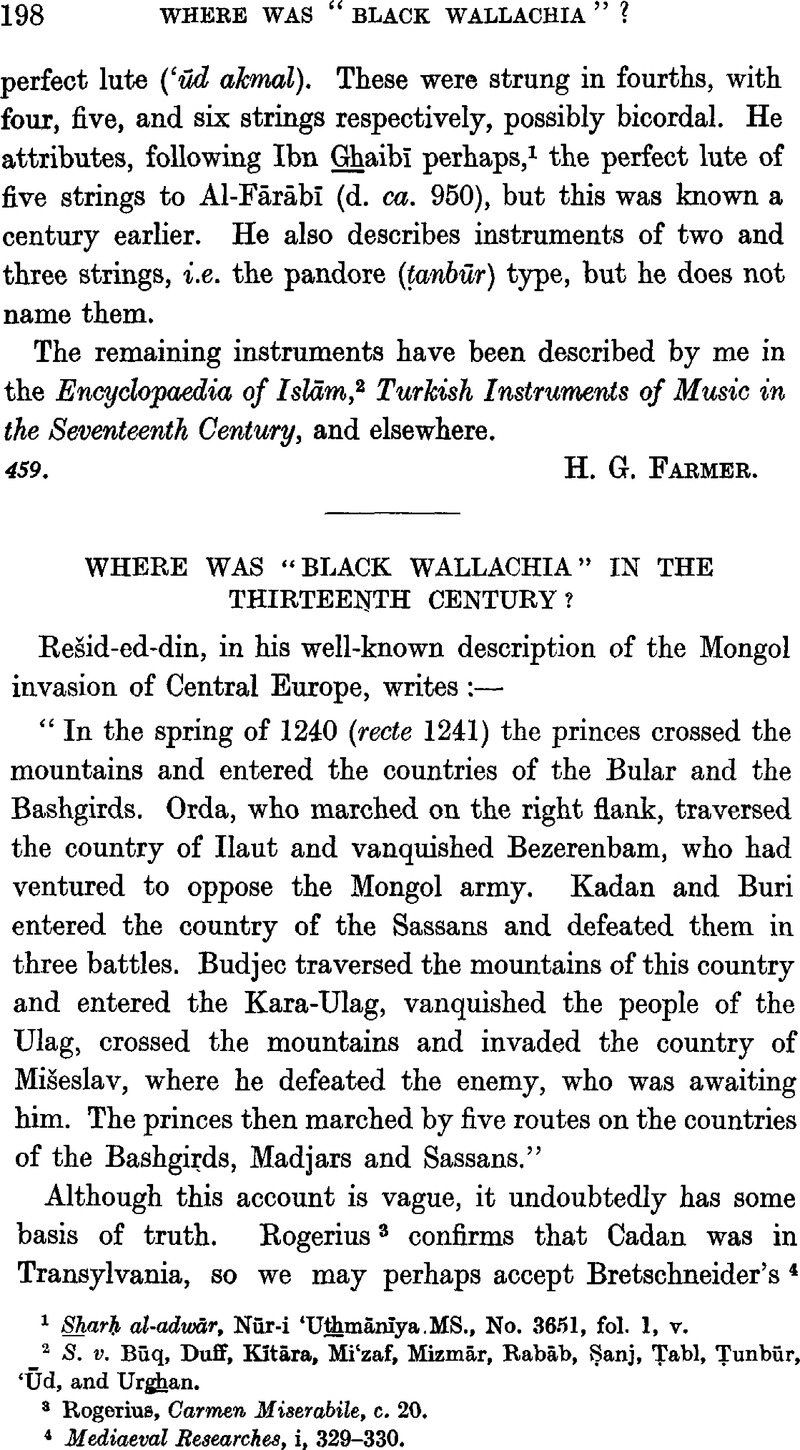Article contents
Where was “Black Wallachia” in the Thirteenth Century?
Published online by Cambridge University Press: 15 March 2011
Abstract

- Type
- Miscellaneous Communications
- Information
- Copyright
- Copyright © The Royal Asiatic Society 1940
References
page 198 note 1 Sharḥ al-adwār, Nūr-i 'Uthmānīya.MS., No. 3651, fol. 1, v.
page 198 note 2 S. v. Būq, Duff, Kītāra, Mi'zaf, Mizmār, Rabāb, ṣanj, ṭabl, ṭunbūr, 'Ūd, and Urghan.
page 198 note 3 Rogerius, Carmen Miserabile, c. 20.
page 198 note 4 Mediaeval Researches, i, 329–330.
page 199 note 1 Der Einfall der Mongolen in Mitteleuropa, p. 43.
page 199 note 2 Ruysbrock, in 1254 found “Saxon” slaves in Central Asia who were “Servi Burii”, Receuil de Voyages, iv, 280Google Scholar.
page 199 note 3 MGSS., xxiv, p. 65.
page 199 note 4 Ibid.
page 199 note 5 Rogerius, loc. cit.
page 199 note 6 Op. cit., p. 96.
page 199 note 7 Fejér, , Cod. Dipt., iv, 2, 221Google Scholar. In confinio Cumanorum ultra Danubium et Bulgarorum, per quern etiam locum tempore invasionis regni nostri ad nos aditum habuit exercitus Thartarorum.
page 200 note 1 Dluosz, , Hist. Pot., p. 676Google Scholar.
- 1
- Cited by




